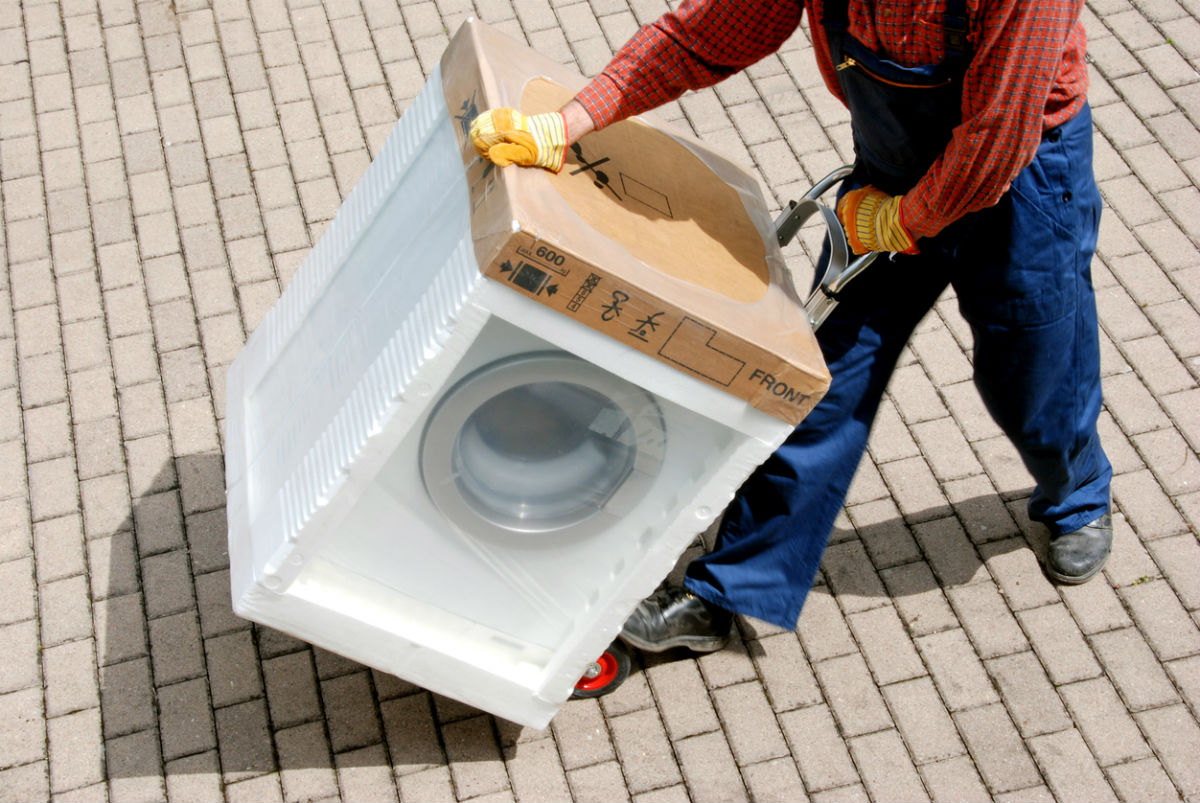We may earn revenue from the products available on this page and participate in affiliate programs. Learn More ›
Q: I want to replace a few aging appliances without paying an arm and a leg. What’s the best time of year to buy appliances?
A: You’re smart to replace appliances before they fail, when you would be forced to pay the going rate at the time they break down—possibly the full list price. Budget-conscious homeowners should buy appliances during the specific months that historically see reduced prices. Whether shopping in-store or online, the ideal time to purchase depends on the type and model year of the appliances you have your eye on.
RELATED: 7 Smart Tips for Saving Big Money on Major Appliances

The best time to buy appliances is when new models roll out: washers, dryers, and dishwashers in September and October, refrigerators in May, and ranges/ovens in January.
When manufacturers unveil the latest models, retailers reduce prices on models from previous years to create more room for the new inventory. Some manufacturers also run promotions during the month that new models are released, and these often result in even deeper discounts. For example, May is “Maytag Month,” when Maytag issues generous rebates on refrigerators.
Buy seasonal appliances in the off-season.
The best time to buy seasonal items like air conditioners, heaters (i.e., furnaces and boilers), and gas grills is during the periods when those appliances are infrequently used.
Retailers put seasonal appliances on sale at these times to help make up for low demand. For example, prices on gas grills take a dive in September and October, when summer grilling wanes. Similarly, the best time to buy an air conditioner or heater is either from September through November or from March through May, two periods when the HVAC retailers who supply HVAC installers with equipment are overstocked, and as a result are willing to sell them to the installers at a discount, who pass the savings along to you. What’s more, HVAC professionals receive fewer service calls during these periods, so they’re often willing to negotiate a lower appliance installation cost with you.

Buy small appliances year’s end.
Snag small appliances such as microwaves, coffee makers, and toaster ovens during November and December. Retailers offer lower prices on these units during these two months to clear out excess inventory left at the end of the year.
Buy new appliances on major holidays and sale events.
If you want a newly released appliance of any type rather than a prior-year model, hold off on buying at the time new models are released—when prices are highest. Plan instead to make your purchase on the next holiday or big sale day like Fourth of July, Memorial Day, Labor Day, Black Friday, and Cyber Monday (for online purchases), when the cost of major and small appliances are reduced well below the original list price to encourage shoppers to spend more time and money shopping during their day off of work.
Top retailers offered an average discount of anywhere from 25 to 60 percent on appliances on Black Friday in 2018, according to WalletHub. But it’s important to review the print or web ad for any sale event before you attend to make sure that the appliance you want is available and at a price that’s actually lower than its original price.
Know the average lifespan of various appliances.
Use the guidelines below on the average lifespan of various appliances to determine when it’s time to start looking for a new one.
Major Appliances:
- Dishwashers typically last 9 years
- Washing machines typically last 10 years
- Dryers typically last 13 years
- Refrigerators typically last 13 years
- Electric ranges typically last 13 years
- Gas ranges typically last 15 years
- Electric ovens typically last 13 years
- Gas ovens typically last 15 years
Seasonal Appliances:
- Central air conditioner typically last 15 years
- Electric furnaces typically last 15 years
- Gas furnaces typically last 18 years
- Electric boilers typically last 13 years
- Gas boilers typically last 21 years
Small Appliances:
- Toaster ovens typically last 5 years
- Drip coffee makers typically last 6 years
- Microwaves typically last 9 years

Shop wisely if buying outside of recommended times.
If you’re forced to buy outside of the time frames above, due to budget restrictions or an appliance emergency (e.g., a conked-out air conditioner) that calls for an immediate replacement, keep these shopping tips in mind to maximize your savings.
- Ask a retailer to sell you a floor model (i.e., one of the appliances on the store floor for display); this strategy can save you as much as 15 percent off the list price.
- Offer to buy a discontinued appliance (i.e., a model that the manufacturer no longer produces) or a slightly damaged appliance (one with cosmetic imperfections like scratches) to increase your savings by up to 30 or 40 percent, respectively. When shopping for damaged appliances, choose models that are free of cracks in glass control panels (these are expensive to replace), are backed by a manufacturer’s warranty, and have been given a once-over by a sales associate to ensure the appliance is in working order and has all the parts indicated in the manual.
- Comparison shop to take advantage of price-match guarantee programs, in which retailers offer to lower the list price of an appliance to the price offered by a competing retailer for an identical item.
- Forgo big-box stores for independent businesses, which are more likely to negotiate on pricing and may even throw in perks such as free installation or appliance repairs for a set period of time.
- Consult price aggregating websites like PriceGrabber or Google Shopping to see whether the appliance you want is on sale for less online.
- Scour online marketplaces like Craigslist for savings on secondhand appliances available locally.
- Browse scratch-and-dent online retailers such as Goedeker’s for deals on appliances that were dinged on the sales floor.

